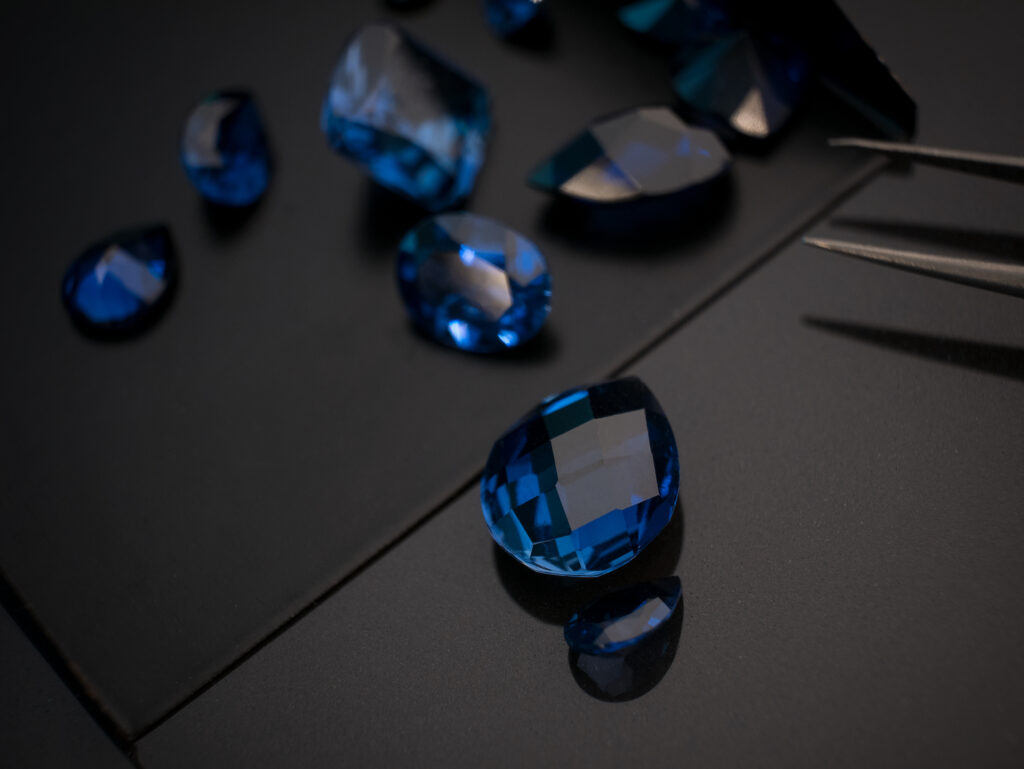Sapphires are famed for their beautiful coloration and remarkable toughness, but can a sapphire chip under the right circumstances?
Sapphires can chip if they suffer a hard or particularly violent impact, or if they’re damaged along an edge, or against a point cut into the stone. They’re susceptible to damage when heat-treated, but at all times remain remarkably hard to scratch.

Read on to learn more about sapphires, why they’re so expensive, and what makes them impervious to some kinds of damage.
Seriously Strong Sapphire
There are plenty of tough materials known to man, but few things are more resilient than gemstones. These intensely durable stones (when found naturally) have been formed over millions of years, compressed into being by the Earth.
When a material is being measured for its ‘hardness’, it’s placed on the Mohs scale. This spectrum ranks every material, from the softest to the hardest – as you might imagine, diamond sits proudly at the top of this scale.
There’s nothing known to man that is harder – or more scratch-resistant – than a diamond. Now, let’s clear that bit up by explaining that a diamond can break or chip, but there’s nothing that can scratch a diamond.
That’s what’s meant by ‘hardness’.
Thankfully, sapphires aren’t too far back down the Mohs scale – the mineral that makes up sapphires actually comes in second place behind diamonds. When a sapphire forms, its base composition is made up of the mineral corundum, and some other assorted trace minerals.
This foundational mineral is remarkably hard, and while a sapphire can be scratched by a diamond, there really is very little else that can damage it. It’s famed for its durability, but, like the diamond, that doesn’t mean it’s invincible.
A Lasting Impact
Let’s be frank – sapphires are extremely tough stones, and it will take quite an effort to break one. They’re naturally resistant to physical damage, and jewelers can polish them almost infinitely to produce a gorgeous shine.
However, if impacted under the right (or wrong) circumstances, a sapphire can chip – even if just slightly. More often than not, if a sapphire suffers a blow along an edge or against a point, it can chip, owing to the natural weakness of the spot.
It’s safe to say that a solid, flat face is much more resistant to impact damage, but there’s still a risk present. If you took a sapphire and slammed it against a concrete wall, there’s definitely an opportunity for damage to occur.
As long as you’re not punching walls, the sapphires in your rings should be mostly safe. There are some very simple ways to care for your sapphires, starting with not storing them with diamonds, not wearing them when you work with your hands and avoiding harsh chemicals.
What About Natural Damage?
When a sapphire is removed from the Earth, or manufactured in a laboratory environment, it can be internally damaged. There’s very little that can prevent this from occurring, and almost every gemstone on Earth features ‘damage’ of this type.
Although, it isn’t always referred to as damage, and in many cases, it can contribute to the uniqueness and beauty of a gemstone. For sapphires, these inclusions can come in the form of sub-surface fractures, air bubbles, or little flecks of intrusive minerals.
As a gemstone forms, intense heat and pressure, combined with invading minerals and foreign bodies, contribute to these inclusions. But, just because your sapphire has some minor inclusions, that doesn’t mean it’s more prone to breaking later down the line.
Furthermore, it’s uncommon to find sapphires with many inclusions for sale at any good jewelers. This is because any gemstone featuring a high number of inclusions just isn’t guaranteed to sell as well as a purer, clearer gemstone.
The Useful Super Sapphire
Thanks to its toughness and resilience, today’s sapphires have found uses outside of simple decoration and jewelry. These days, sapphire is used in screens for cellphones and watches, resistant windows, and even some electronic components and scientific instruments.
And that’s a perfect example right there – cellphone screens. If you try and scratch a phone screen, you’ll find yourself having quite a hard time, but drop it against the curb, and it’ll fracture like nobody’s business.
Of course, cellphone screens aren’t made entirely from sapphire – that’d make them ridiculously expensive. Instead, cellphone screens will be constructed from an amalgam of sapphire and a highly resistant layer of synthetical material.
You can learn much more about sapphires in another article we published, discussing the coloration and formation of the gemstone itself.
